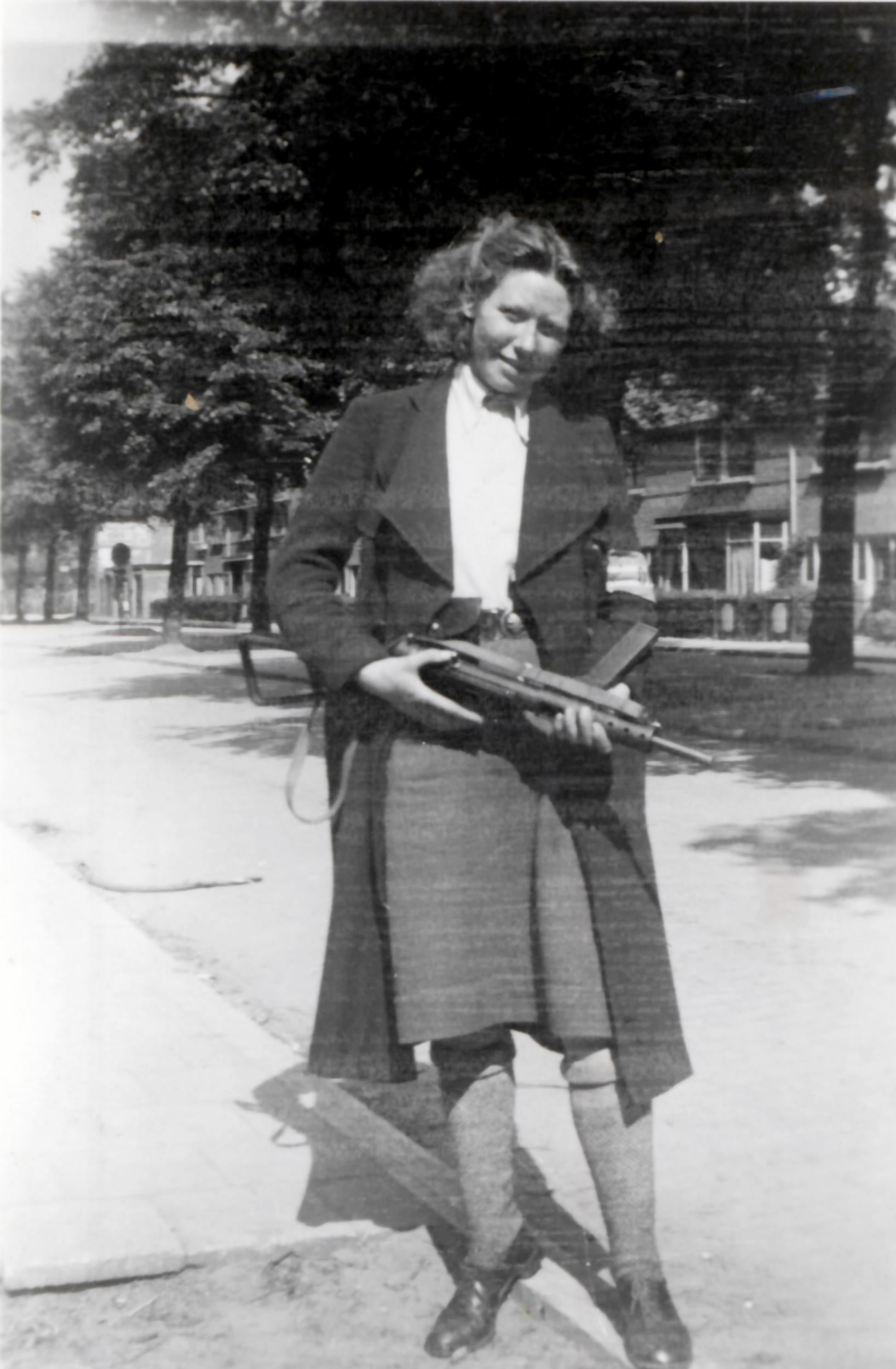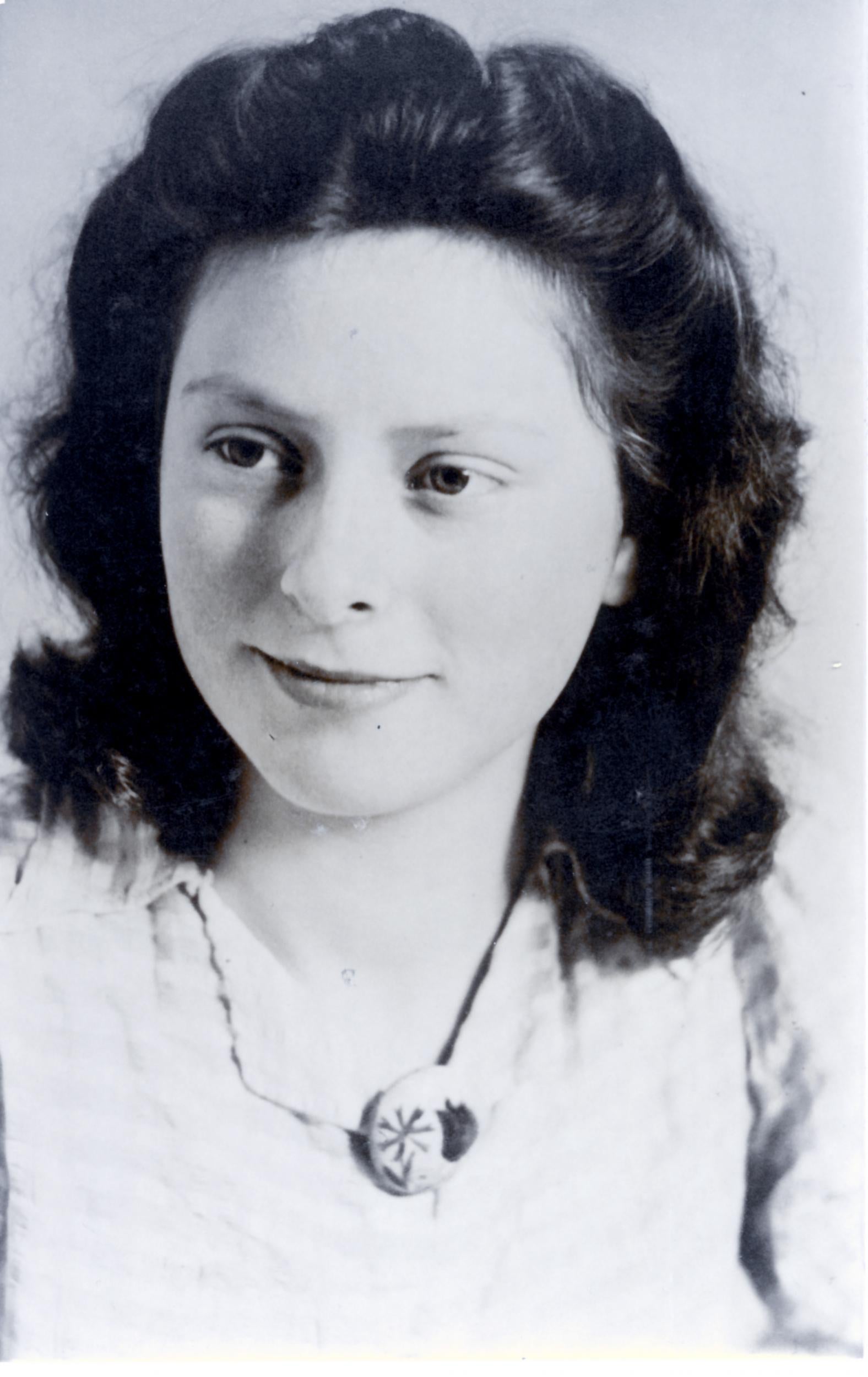The teenage girls who flirted with Nazis before luring them into woods and shooting them
‘They were teenagers and they were young and pretty. They would dress up very nicely and wear heavy makeup,’ says author
Your support helps us to tell the story
From reproductive rights to climate change to Big Tech, The Independent is on the ground when the story is developing. Whether it's investigating the financials of Elon Musk's pro-Trump PAC or producing our latest documentary, 'The A Word', which shines a light on the American women fighting for reproductive rights, we know how important it is to parse out the facts from the messaging.
At such a critical moment in US history, we need reporters on the ground. Your donation allows us to keep sending journalists to speak to both sides of the story.
The Independent is trusted by Americans across the entire political spectrum. And unlike many other quality news outlets, we choose not to lock Americans out of our reporting and analysis with paywalls. We believe quality journalism should be available to everyone, paid for by those who can afford it.
Your support makes all the difference.Red lipstick and shiny eye shadow were unlikely but important weapons deployed by members of the Dutch resistance when taking on Nazi soldiers.
Freddie and Truus Oversteegen, two sisters, and their best friend Hannie Schaft would put on their best clothes and fastidiously apply their make-up before going into bars to seek out unsuspecting targets.
The young girls, who were active in the Dutch resistance during the Second World War, would then strike up conversations with Nazi soldiers or Dutch collaborators. They would giggle and bat their eyelashes as they cajoled them into disclosing classified information.
Then they would lure them into the woods on the pretext of a “romantic walk” – and shoot them dead.
Freddie and Truus survived the war but Hannie, who is far more famous than the Oversteegen sisters, was caught and executed by the Nazis just three weeks before the war came to an end.
The last words she uttered are said to have been “I’m a better shot” after one of her executioners wounded her with the first attempt.
Sophie Poldermans was a close friend of Freddie and Truus, who both recently died at the age of 92, and intimately and regularly spoke to them about their memories of the war throughout their lives.
Ms Poldermans, a lawyer who specialises in women and war crimes, has now written about their harrowing experiences in a book titled Seducing and Killing Nazis – Hannie, Truus, and Freddie: Dutch Resistance Heroines of WWII.
“They were extremely brave women,” she told The Independent. “I would not want to have stood in their shoes. They started out small in the resistance – carrying illegal newspapers printed by the resistance news about Nazi troops. They would ride their bicycles and deliver them to specific addresses. They would also steal false identification papers for Jewish people in hiding.”
Freddie and Truus, who was two years older than her, were born and raised in Haarlem, a Dutch city close to Amsterdam, by a single mother.
The parents had divorced and their mother was a communist. She would get the young girls to make dolls for children who were victims of the Spanish Civil War.

Ms Poldermans, who worked with the siblings for over a decade as a board member of the National Hannie Schaft Foundation but also knew them personally, said Truus and Hannie would help transport Jewish children to safe houses but Freddie, 14 at the beginning of the war, had been too young to help.
“People also could have easily thought she was a Jewish child herself because of her appearance so it would have been too dangerous for her,” Ms Poldermans said. “But Truus and Hannie would take Jewish children from one safe house to another on their bikes if they knew there were traitors around. It was not suspicious for them to be carrying young children because they were women. They would sing songs to distract the children.”
But the three girls’ roles and tactics in the resistance grew increasingly dangerous as they got more heavily involved.

“They would use explosives to blow up railway lines and trains to make sure Germans were not able to transport soldiers or weapons or Jewish people,” Ms Poldermans explains. “This was a heavier type of resistance. They wanted to make sure it was chaos on the railway line.”
It was not long before the teenage girls started seducing and shooting Nazis – with commanders assigning them particular targets.
“These are the only three women we know of who seduced and killed Nazis in the Netherlands,” Ms Poldermans says. “That is what makes it such a unique story. They were teenagers and they were young and pretty. They would dress up very nicely and wear heavy make-up. They would pretend to be kraut girls who were local women who had relationships with German officers, Dutch traders and general members of the Nazi party. Of course, their main target was the high-ranking officers.”
She adds: “They would go into bars and then they would flirt with these soldiers and giggle and smile and be girly girls. They would say ‘We can go for a romantic walk in the forest’. They would lure these guys into the woods to try to extract all the information they needed and then they would shoot them right there on the spot. Freddie was about 16. Truus was 18 and Hannie was 21. They started in the summer of 1943 and carried on until the end of the war.”
Truus was a real tomboy who had never worn make-up before, whereas Hannie always powdered her face right before an assignment in order to “die beautifully” in case she was captured by the Nazis.
Ms Poldermans, who notes the girls never slept with the Nazis, said they would have to relocate if their profile started to become known in the area to ensure they were not recognised. The girls kept their actions a secret from everyone – even friends and family – for security purposes.
The sisters always refused to reveal how many Nazis they had killed when asked about it after the war – with Freddie telling Ms Poldermans: “One should not ask a soldier any of that.”
“They did what they did because it had to be done,” Ms Poldermans says. “They believed in justice. They did not believe there was another way. At the same time, they tried to remain human. They suffered from depression and had nightmares and what we would now call PTSD.”
The lecturer says it took a long time after the end of the war before the sisters got the recognition they deserved – explaining many people wanted to look forwards rather than backwards, and stories of the resistance were dominated by men.
Ms Poldermans adds: “They had to fight for recognition. Truus was very outspoken. She would always tell her story but Freddie was very traumatised. She couldn’t talk about the war and it was only in the last few years of her life that she could. Freddie got all the recognition for her work after she died. It is too bad she doesn’t know.
“War affected everything in their lives. Truus became a well-known sculptor but the war was present in all of her artwork. The trauma never went away for them. Every day around liberation day in May, they would wake up screaming, having nightmares about the war. All the memories came back to them. It was so bad that Freddie would have to leave the country for a couple of months during that time of year.”
Subscribe to Independent Premium to bookmark this article
Want to bookmark your favourite articles and stories to read or reference later? Start your Independent Premium subscription today.

Join our commenting forum
Join thought-provoking conversations, follow other Independent readers and see their replies
Comments